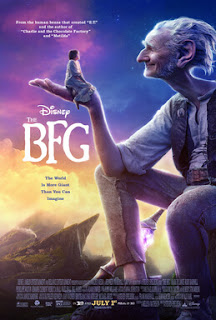Opening this week:
Early on, we're invited to share Vee's fun and exhilaration at her first few relatively harmless dares. As the story progresses, it grows more sinister and suspenseful. At least until its rather improbably epic finale, Nerve, directed by Henry Joost and Ariel Schulman from a script by Jessica Sharzer (based on Jeanne Ryan's novel) is well-paced and engagingly acted—it has the potential to be a minor teen-flick classic.
But there's a worrying side to this. While they usually aren't on this scale, idiotic dares among teenagers are a very real thing. I hope that the target audience here doesn't ignore its cautionary side in favor of the glamorized risky behavior. The idea of attempting to act out this movie in real life could get on any parent's last...well, you know.
Life, Animated—The life in question in this documentary is that of Owen Suskind, the younger son of Wall Street Journal writer Ron Suskind. Owen stopped speaking when he was three years old, was diagnosed with autism, and seemed only to be pacified by watching Disney animated films. Gradually his family realized that his movie watching wasn't mindless self-stimulation; he used the characters and conflicts to make sense of his own life, and this enabled him to re-engage with the world.
Directed by Roger Ross Williams from Ron Suskind's like-titled book, the movie is initially heartbreaking, then thrilling. We soon see that what Owen does is only a slightly more extreme version of what many of us do with, say, Shakespeare, or Marvel Comics, or Star Trek—use them as an allegorical shorthand for our own life challenges.
Owen has a fine screen presence, with hints of an ironic sensibility, as in his offhand use of effusive adjectives. But he also has a straightforward lucidity, especially in the face of sadness, that's highly admirable. And he has the soul of a storyteller himself—his own hero narrative, about a boy protecting the Disney sidekicks from a mind-clouding villain called Fuzzbutch, is stirringly rendered in this movie by the French animation company Mac Guff.
Owen's adoring parents and older brother also make a deeply touching impression. And a word should be said for Ron Suskind's performing skills—when he recounts imitating Iago, the nasty little parrot from Aladdin, as the first time he used a Disney character to connect with his son, he does a pretty respectable Gilbert Gottfried.
Phantom Boy—While we're on the subject of French animation: This French-Belgian co-production by Alain Gagnol and Jean-Loup Felicioli (the guys who made 2010's A Cat in Paris), is a gem. Set in New York, it follows title character Leo, a gravely ill boy who has learned to leave his own body and zip around the Manhattan skyline.
In this manner Leo helps a hospital-bound young police detective and a Lois Lane-ish reporter outfox The Face, a super-villain so called because his mug resembles a Picasso portrait (he's voiced here by Vincent D'Onofrio; the voice cast of the English version also includes Fred Armisen and Jared Padalecki). The movie's best comedy arises from The Face's attempts at high villainous flourishes, undermined by his doltish henchmen and his hapless dog Rufus.
The story elements have the familiar flavor of old-school cartoons and European kids' adventure books or comics, but they're wittily recombined here—Tintin meets Casper—and the two-dimensional drawing of the characters, with their simplified, dot-and-dash facial features, is effective. Better still is the rain-on-the-sidewalk atmosphere of the settings. There's a light touch to this movie, an un-fussy feel that it's not oppressively overproduced. It's refreshing.






















